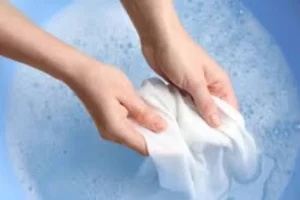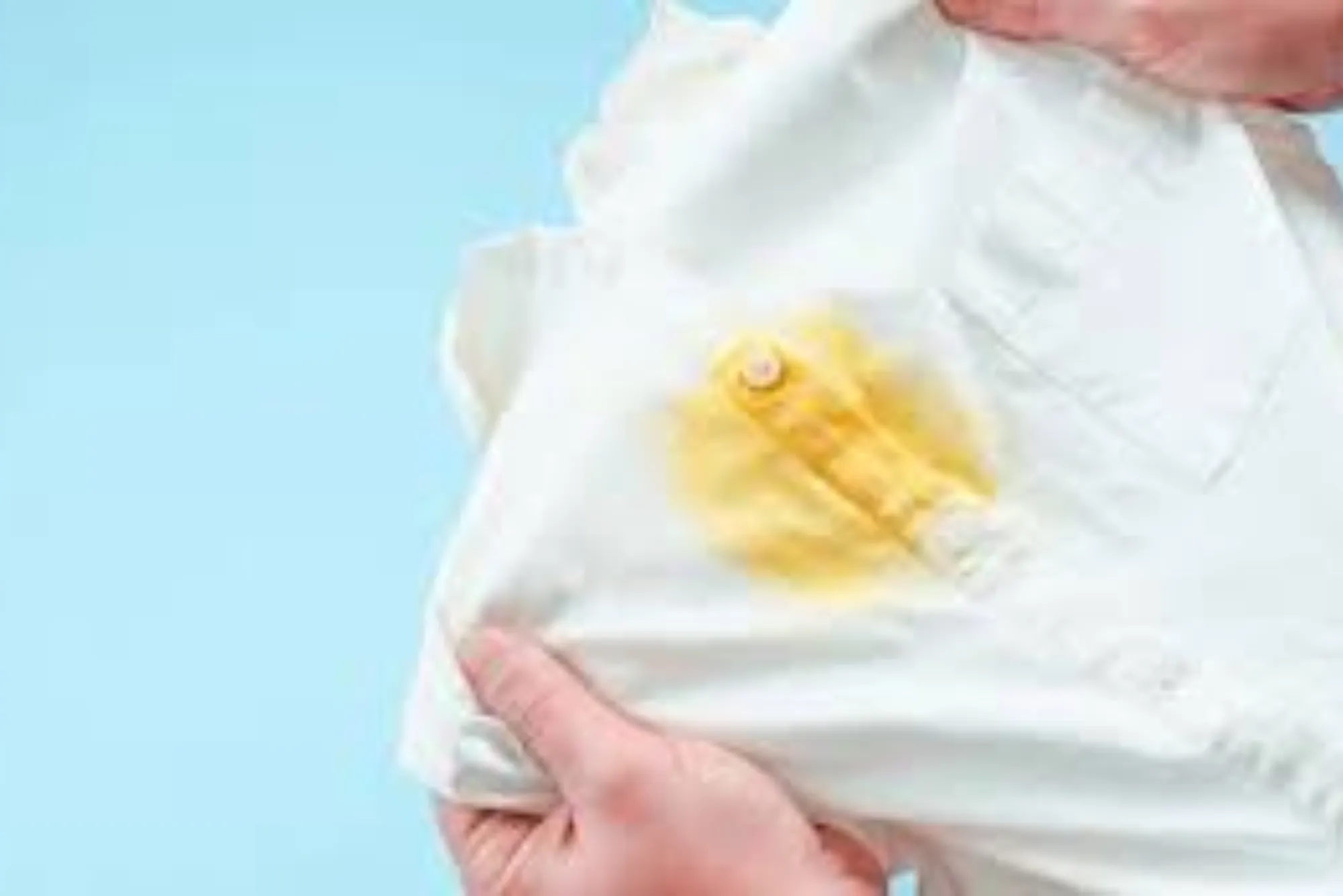Accidents happen, and one of the most frustrating mishaps is getting bleach on your clothes. Bleach stains are notoriously challenging to remove, but with the right approach, you can minimize the damage and, in some cases, even restore your garments. This guide will walk you through the steps on how to get bleach out of clothes effectively.
Understanding Bleach Stains
Bleach is a powerful chemical that works by breaking down and removing color from fabrics. When bleach comes into contact with clothes, it causes a chemical reaction that strips the dye from the fabric, resulting in white or light spots. Because this process alters the fabric’s color at a molecular level, completely reversing bleach stains can be difficult. However, you can take steps to neutralize the bleach and minimize its appearance.
Immediate Action Steps
Rinse Thoroughly
Rinsing thoroughly is a crucial first step when you discover a bleach stain on your clothes. This immediate action helps to mitigate further damage by removing any excess bleach from the fabric. Here’s a detailed breakdown of how to do it effectively:
Why Rinsing Matters
Bleach works quickly to break down the dye in fabrics, causing discoloration and weakening the material. The longer bleach remains on the fabric, the more extensive the damage will be. Rinsing helps to dilute the bleach, slowing down its chemical reaction and preventing it from spreading.
Steps for Rinsing Thoroughly
Act Quickly: As soon as you notice the bleach stain, take immediate action. The faster you start the rinsing process, the better your chances of minimizing damage.
Use Cold Water: Hold the stained area under a running faucet with cold water. Cold water helps to reduce the reaction speed of the bleach with the fabric. Avoid using hot water, as it can set the stain further into the fabric fibers.
Rinse from the Back: To prevent the bleach from spreading to other areas of the fabric, rinse from the back of the stained area. This means holding the unstained side under the running water so that the bleach is pushed out of the fabric rather than being spread around.
Run Water for Several Minutes: Let the cold water run over the stained area for several minutes. This ensures that as much bleach as possible is flushed out of the fabric. Continue rinsing until you feel confident that the majority of the bleach has been removed.
Gently Squeeze Out Excess Water: After rinsing, gently squeeze out the excess water from the fabric. Avoid wringing or twisting the fabric, as this can cause further damage or spread the stain.
Prepare for Next Steps: Once you have thoroughly rinsed the stained area, you can proceed with other treatments to neutralize the bleach and address the stain, such as using a baking soda solution or a commercial bleach neutralizer.
Tips for Effective Rinsing
Keep the Fabric Flat: Try to keep the fabric as flat as possible while rinsing to avoid creases and folds where bleach could get trapped.
Use Ample Water Pressure: If possible, use a faucet with good water pressure to help force the bleach out of the fabric more effectively.
Check for Residual Bleach: After rinsing, sniff the fabric to check for any lingering bleach smell. If you still detect bleach, rinse again to ensure all traces are removed.
By thoroughly rinsing the stained area immediately after a bleach spill, you can significantly reduce the severity of the stain and improve the chances of restoring your garment to its original condition.

Neutralize the Bleach
After rinsing, neutralize the bleach with a solution of water and baking soda. Mix one tablespoon of baking soda with one cup of water and apply it to the stained area. Let it sit for about five minutes, then rinse thoroughly with cold water.
Use a Bleach Neutralizer
For more severe stains, consider using a commercial bleach neutralizer, available at most laundry supply stores. Follow the product instructions carefully to ensure proper application.
Treatment Options for Bleach Stains
Dyeing the Fabric
One effective way to get bleach out of clothes is to dye the fabric. This method works best if the bleach stain is extensive or if you want to give your garment a new look. Fabric dyes are available in various colors, and you can choose one that closely matches the original color of your garment.
Fabric Markers
For small bleach stains, fabric markers can be a quick fix. These markers come in a variety of colors and can be used to cover up the bleached area. Choose a color that matches your fabric and carefully color in the stained spot. This method works best on small, less noticeable stains.
Patching
If the bleach stain is localized, you can cover it with a fabric patch. Choose a patch that complements your garment’s design, and sew it over the stained area. This can be a stylish and practical solution for larger stains.

Preventing Future Bleach Stains
Use Bleach Sparingly
When using bleach for cleaning or laundry, always use it sparingly and follow the recommended dilution ratios. Overuse of bleach increases the risk of accidental spills and stains.
Wear Protective Clothing
When working with bleach, it’s crucial to take steps to protect your clothes and skin from accidental splashes and spills. Here are some detailed recommendations on how to wear protective clothing effectively to prevent bleach stains:
Designate Bleach-Use Clothing
Old Clothes: Keep a set of old clothes specifically for tasks involving bleach. This way, if you do get bleach on them, it won’t matter as much.
Dark Colors: Dark or patterned clothes can sometimes better hide small bleach stains compared to light or solid-colored garments.
Use Aprons or Smocks
Plastic or Rubber Aprons: Invest in a durable, waterproof apron. These materials are resistant to bleach and can easily be wiped clean after use.
Disposable Smocks: For one-time tasks, consider using disposable smocks that you can throw away after use, reducing the risk of staining your regular clothes.
Protective Gloves
Rubber or Latex Gloves: Always wear rubber or latex gloves when handling bleach. This protects your skin from irritation and prevents accidental drips from reaching your clothes.
Long-Sleeved Gloves: Choose gloves with extended cuffs that cover your wrists and part of your forearms for extra protection.
Long-Sleeved Shirts and Pants
Full Coverage: Wear long-sleeved shirts and long pants to cover as much skin as possible. This provides an extra layer of protection against accidental splashes.
Thick Fabric: Thicker fabrics offer better protection than thin ones, as bleach is less likely to penetrate through them quickly.
Protective Footwear
Closed-Toe Shoes: Wear closed-toe shoes instead of sandals or flip-flops to protect your feet from spills.
Bleach-Resistant Shoes: If you handle bleach frequently, consider investing in bleach-resistant footwear made from materials that won’t be easily damaged by chemicals.
Safety Goggles
Eye Protection: While not clothing, wearing safety goggles is essential to protect your eyes from splashes. This is especially important when working with bleach solutions that might splash upwards.
Proper Disposal and Cleaning
Dispose of or Clean Clothing Promptly: If you do get bleach on your protective clothing, rinse it immediately with cold water to remove as much bleach as possible. Wash these clothes separately from your regular laundry.
Dedicated Laundry Cycle: Run a separate laundry cycle for bleach-contaminated clothes to prevent accidental bleaching of other garments.
Additional Tips
Work in a Well-Ventilated Area: Always use bleach in a well-ventilated area to avoid inhaling fumes, which can be harmful.
Read Labels and Instructions: Follow the instructions on the bleach product label for safe usage and handling.
By following these detailed steps, you can significantly reduce the risk of bleach stains and protect your clothes and skin from chemical exposure. This proactive approach ensures you can use bleach effectively while minimizing the chances of accidental damage to your garments.
Store Bleach Safely
Keep bleach in a secure, upright position to avoid spills. Ensure the cap is tightly closed and store it away from your laundry area to minimize the risk of accidental contact with clothes.
Dealing with bleach stains can be frustrating, but with quick action and the right techniques, you can minimize the damage and, in some cases, restore your clothes. Whether you choose to neutralize the bleach, use fabric markers, dye the fabric, or apply patches, there are several ways to address the problem. By taking preventive measures, you can avoid future bleach mishaps and keep your clothes looking their best.



